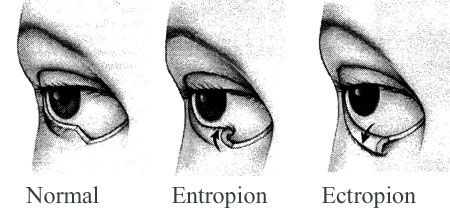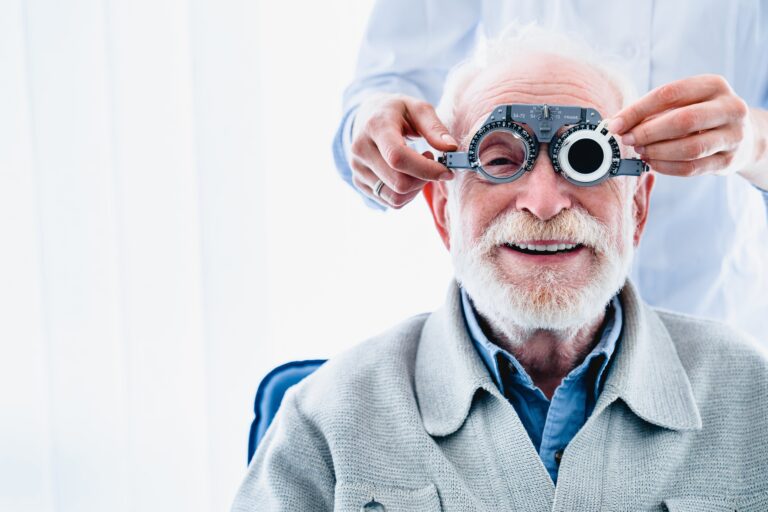
14 Comments
Comments are closed.
Fraser Valley Cataract & Laser
SOCIALIZE WITH US!
Abbotsford (604) 853-5575 | Chilliwack (604) 792-4600 | Coquitlam (604) 474-3937 | Surrey (604) 372-3937


Two of the most common eyelid complications our patients face are dermatochalasis and ptosis. Both involve drooping of the eyelid but the reason for the droop is dependent on which condition is the root cause. Dermatochalasis, the more common of the two, is commonly caused by age related loosening of the eyelid skin. Ptosis, a slightly different condition, is a result of the elevator tendon responsible for lifting the eyelid becoming loose. While our cosmetic clinic can temporarily improve symptoms using Botox injections, more serious cases require eyelid surgery to remove excess fat and skin, or tighten the tendon responsible for lifting the eyelid.

The typical Asian eyelid is anatomically different from a Caucasion one. Many Asian eyelids are monolid meaning they lack the fold or crease that naturally occurs in Caucasian eyelids. This makes the eyes appear smaller and changes the application of makeup on the eyelids.The procedure used to treat this is very similar to the treatment for dermatochalasis. In addition to the typical dermatochalasis procedure, the surgeon will create a crease in the patient’s eyelid to give a more awake, alert, bright-eyed appearance.

Ectropions and entropions are the result of the eyelid (usually lower eyelid) turning outward or inward respectively. When an ectropion occurs and the eyelid turns outwards, it can expose the area it usually shields underneath your eye allowing for air, dust, and debris to irritate it. Although this condition is usually not serious it can be extremely uncomfortable. In contrast, entropions (turning in of the eyelids) cause your lower eyelashes to continuously rub against the eye causing dry eye, pain, and potentially cornea damage, eye infections, and even vision loss. When dealing with either of these conditions, artificial tears and lubricating ointments can help to relieve symptoms but surgery is required to fully correct the condition.

Styes and chalazions are caused by clogged oil glands and can result in red, painful lumps around the edges of the eye. Styes are more painful and acute and can be treated initially by warm compresses. Chalazions are chronic and less painful. In most cases, styes can resolve on their own, but chalazions are more chronic. A doctor can inject corticosteroid and/or drain the lump surgically.
To learn more about other procedures we offer to treat age-related cosmetic issues, be sure to check out our Cosmetics Page!

Cataracts can cloud your world, hindering your ability to see and enjoy life’s vivid moments. Fortunately, advancements in medical science offer solutions through cataract surgery, providing a gateway to renewed vision. When facing this decision, most do not know there are different options, and understanding the paths available is crucial to the happy result you…

Laser vision correction, also known as laser eye surgery, is a popular and effective way to correct vision problems such as nearsightedness, farsightedness, and astigmatism. However, it is not uncommon for people to have concerns about undergoing surgery, especially surgery on their eyes. This post will discuss some of the most common concerns people have…

Discover freedom from glasses or contacts with BC LASIK! Explore advanced vision solutions like ICL, LASIK, PRK, RLE, & LAL. Schedule your consultation today!

What Are The Benefits? New laser assisted procedures increase the precision and predictability of cataract surgery more than ever before. Instead of manually performing much of the operation with the traditional blade, this innovation allows our surgeons to undergo the most delicate, and challenging steps of cataract surgery using a computer programmed blade-free laser. Fraser…

Understand the various causes and treatment for floaters in your eye. Consult Fraser Valley Cataract and Laser for treatment.

The Primary Goals and Benefits of Cataract Surgery Cataract surgery is a medical procedure that can also restore a patient’s ability to experience clear vision. There are potential complications with any procedures, especially associated with neglected cataracts that have been allowed to hyper-mature. If left untreated, they can lead to severe vision impairment or even…
Comments are closed.
Открытие ООО по шагам: регистрация и подготовка бизнеса
ооо как открыть http://www.tb-otkrytb-ooo1.ru/.
????????? ????? ?? ?????? ?????
îñàãî ìîñêâà http://tb-osago1.ru/.
Бесплатная консультация по пластиковым окнам
какие окна лучше окна пластиковые какие лучше.
Как оформить возврат средств за страховку ВЗР при отмене поездки?
страховой полис для выезжающих за границу https://www.tb-vzr1.ru/.
Стоимость клининга для дома и офиса: анализ цен и выбор оптимального предложения
генеральная уборка спб klining-spb-78.ru/uborka-kvartir/generalnaya-uborka-kvartir.
Excellent read, I just passed this onto a friend who was doing some research on that. And he actually bought me lunch since I found it for him smile So let me rephrase that: Thank you for lunch!
Thanks for your submission. Another factor is that just being a photographer requires not only issues in capturing award-winning photographs but in addition hardships in getting the best photographic camera suited to your needs and most especially challenges in maintaining the standard of your camera. This is very correct and obvious for those photography lovers that are into capturing the particular nature’s eye-catching scenes : the mountains, the particular forests, the particular wild or maybe the seas. Going to these daring places undoubtedly requires a photographic camera that can surpass the wild’s nasty areas.
Spot lets start on this write-up, I honestly think this website needs much more consideration. I’ll oftimes be once more you just read a lot more, thank you for that info.
well, i bought some digital pedometer on the local walmart and it is great for monitoring your performance when walking”
You need to be a part of a tournament for just one of the greatest blogs over the internet. Let me suggest this website!
art posters are great for room decoration too, i use art posters on my bedroom as decorations`
It’s rare to find well-informed people on this kind of issue, however you sound like you know very well what you’re speaking about! Kudos
Hey there this is a fantastic article. I’m going to e mail this to my buddies. I stumbled on this while browsing on google I’ll be sure to come back. thanks for sharing.
If you are able to get her to go along with this, post the location: I’m sure there are lots of Y!A users who’d like to read her stuff.